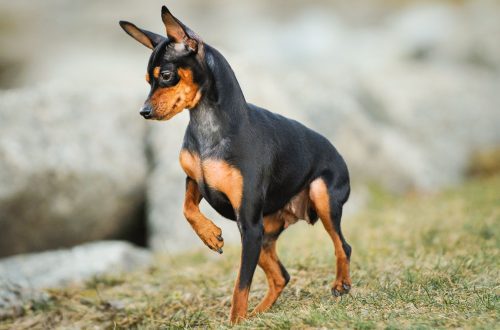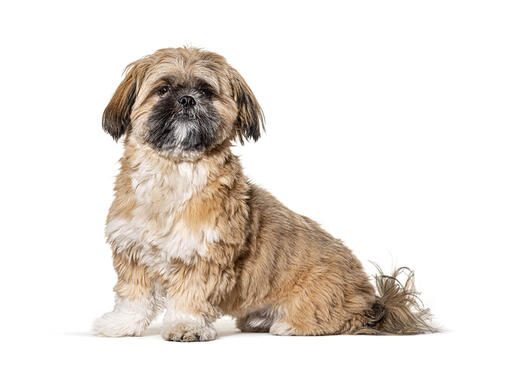
Shih Tzu
Other names: lion dog , chrysanthemum dog
The Shih Tzu is a companion dog with a long, satiny coat that gives the animal a resemblance to a chrysanthemum flower. It has Asian roots, is distinguished by a balanced character and a strong sense of attachment to the owner.
Contents
Characteristics of Shih Tzu
| Country of origin | Tibet |
| The size | small |
| Growth | 25–27 cm |
| Weight | 4.5–8.1 kg |
| Age | up to 16 years |
| FCI breed group | toys and companion dogs |
Basic moments
- Shih Tzu is one of the most ancient breeds. Recent studies have shown that “chrysanthemum dogs” are much closer to their wild ancestor – the wolf than, for example, mastiffs and shepherds.
- Adult animals have a mature character and a stable psyche. They are not cowardly and are not subject to severe stress.
- Shih Tzu love to walk in the fresh air, but if walking is postponed for some reason, they will easily survive it.
- The long coat of a dog needs frequent washing and daily combing, which can become an additional burden for busy owners.
- Shih Tzu do not dislike strangers, so these pets do not make the best watchmen.
- Once you have a Shih Tzu in your home, be prepared to maintain a constant temperature in the room, as dogs suffer equally from both heat and cold.
- Due to the bright image, in which the spectacular “fur coat” plays an important role, the Shih Tzu is often considered a decorative pet. In fact, these fluffy beauties belong to the group of companion dogs, ready to follow the owner wherever possible.
- It is believed that Shih Tzu do not raise a fuss over trifles, but you cannot call them completely voiceless either. Dogs are able to bark quite loudly, and if this skill is not curbed, then the animal will often demonstrate its “vocal abilities”.
- The presence of a person in the house for a dog is not a whim, but an urgent need. The fear of being alone makes the Shih Tzu depressive, dull and extremely nervous.
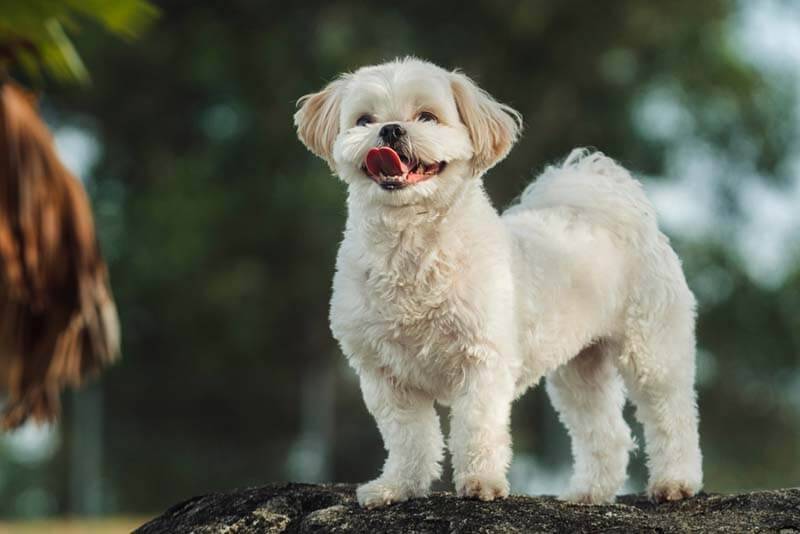
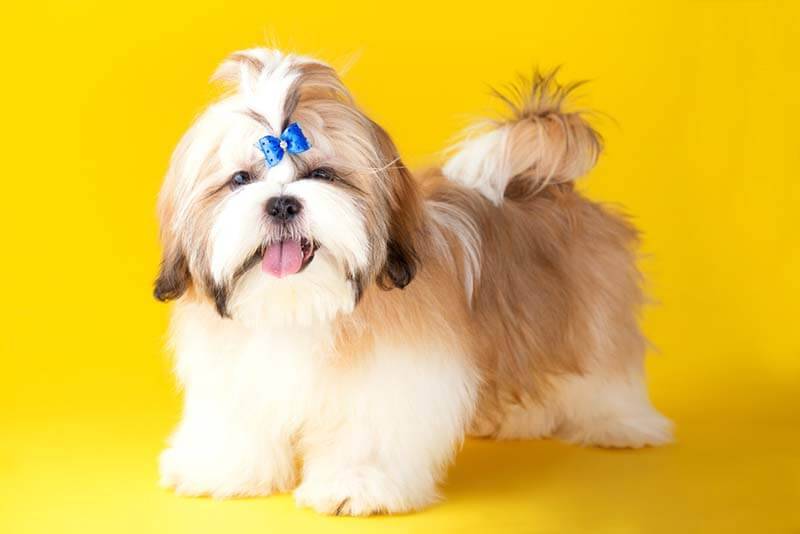
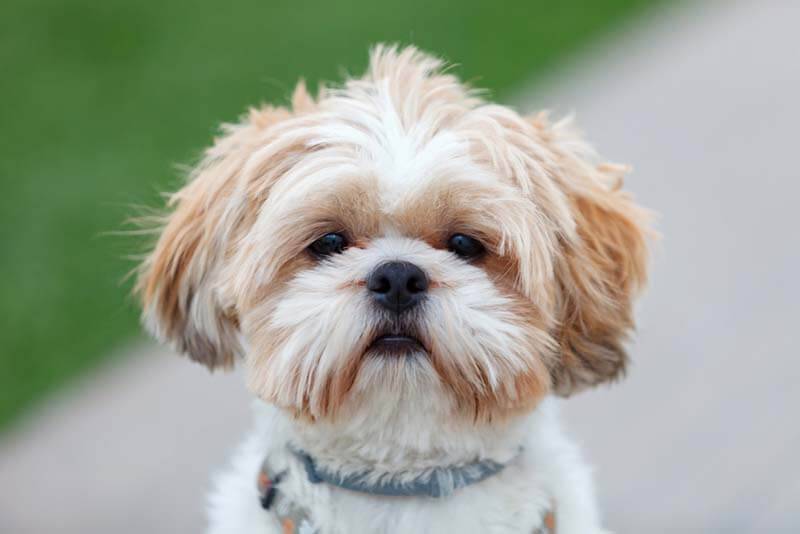
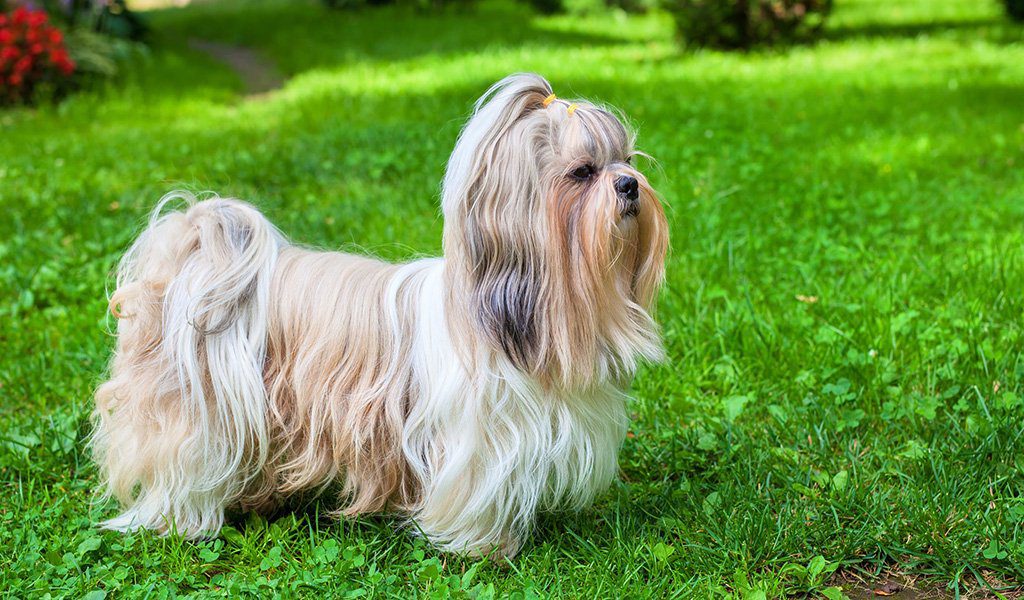
Shih Tzu is a trusting fluffy, “charged” with selfless love for any two-legged creature. Favorites of Chinese emperors and nobles, Shih Tzu for a long time remained a living exclusive, inaccessible to mere mortals. And only the 20th century, rich in changes and conflicts, was able to bring the breed out of the shadows, turning its representatives into charming pets, combining a non-trivial appearance with excellent companion qualities.
History of the breed
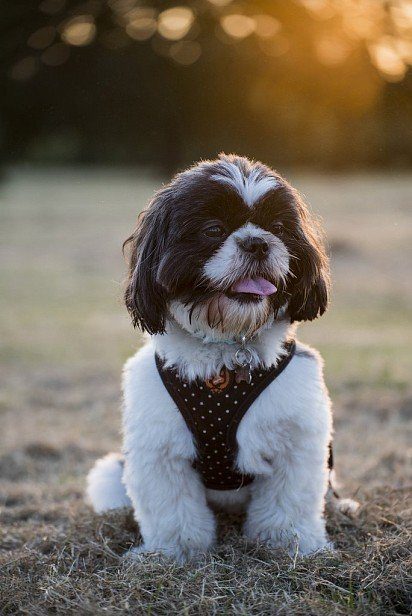
The official birthplace of the breed is China. According to one version, Tibetan monks were the first to breed long-haired dogs. However, stubborn hermits did not want to sell their pets to anyone, which is why the ancestors of modern Shih Tzu could not get deep into the continent and settled in the Middle Kingdom. According to ancient manuscripts, the Dalai Lama himself presented the first shaggy puppy to the Chinese emperor in 1653.
In China, unusual dogs were immediately elevated to a cult, gluing them with the label of court pets. The imperial family was declared the owner of all rights to animals, which brought a lot of privileges to the Shih Tzu, but made them recluses. It became unrealistic to see these fluffies anywhere other than the chambers of the Chinese ruler, since the unauthorized sale and theft of “royal property” was punishable by death.
After the Communist Party came to power, the attitude towards the breed changed dramatically. Supporters of the new regime perceived decorative dogs as part of the hated monarchical past and began to exterminate them mercilessly. This alignment turned out to be in the hands of European breeders, who had long dreamed of getting to know the mysterious imperial favorites better. Taking advantage of the confusion that reigned in the conflict-shaken Middle Kingdom, the Europeans began to export Shih Tzu from it. The first “lion cubs” were taken from 1930 to 1932 to England and Norway. About a dozen more animals left China between 1932 and 1959. As for the breeders of the New World, the dogs came to them only after the Second World War, as war trophies.
Chinese fluffies began to gain popularity among tribal specialists and ordinary people already in the 30s of the XX century. For example, in 1933, the first Shih Tzu club opened in Great Britain. In America, a similar organization began its work in 1959. In 1948, an appearance standard was developed and approved for “chrysanthemum dogs”, and in 1969, favorites of Chinese nobles received the status of an independent breed.
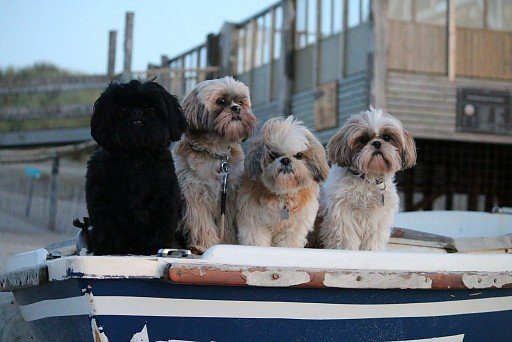
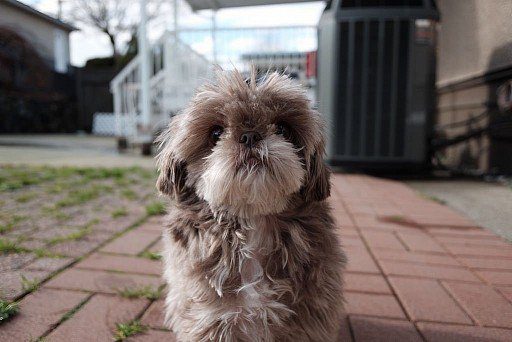
Why Shih Tzu?
From Chinese, the word “shih tzu” is translated as “lion cub”. The breed owes this name to an ancient legend about a tiny dog ha-pa that accompanied Buddha on his travels. In case of danger, the brave animal turned into a lion and stood up for the protection of the spiritual master.
Video: Shih Tzu
Shih Tzu appearance
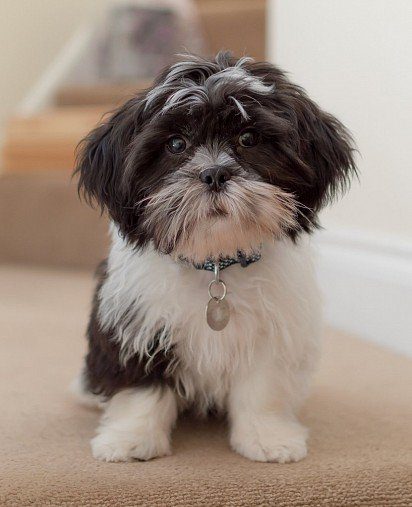
A few kilograms of pure charm – this is how you can characterize the appearance of these glamorous hairies. The height of the average Shih Tzu reaches 27 cm at the withers, and its weight ranges between 4.5 and 8.5 kg, therefore, when trying to embrace the dog, be prepared for the fact that the airy, at first glance, creature will not actually such a light burden.
A cursory examination of the “lion cub” is easy to confuse with another well-known “Tibetan” – Lhasa Apso, who has the same strong physique, but differs in more impressive dimensions. Some scientists put forward versions about the relationship of both breeds, but since it is not possible to trace the process of their development over the years, guesswork remains guesswork.
Head
The skull is rather large, rounded, with a steep stop. The muzzle is of a shortened type (about 2.5 cm), wide, in the shape of a square. Since all Shih Tzus are brachycephalic, they may have difficulty breathing on hot and muggy days.
Jaws
For “dogs-lions” a tick-like type of bite is typical. In addition, a slight undershot is allowed by the standard. The jaws of representatives of this breed are wide, slightly weighted.
Nose
The bridge of the nose is elongated in a straight line or slightly upturned. The lobe is located on the same level with the edge of the lower eyelid and is painted black or chocolate. The nostrils are open, with a rather wide neckline.
Eyes
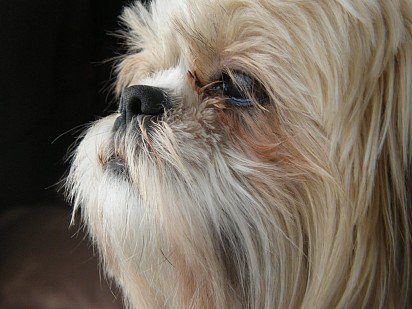
Rounded, but not excessively protruding. Set wide apart, the whites of the eyes are not visible. The shade of the iris is preferably dark, but for Shih Tzu with brown, as well as chocolate-spotted coat color, an exception is allowed. Such dogs may have relatively light eyes.
Ears
Hanging, large, planted just below the crown. The ear cloth is long, hidden under abundant flowing hair.
Neck
Graceful, moderately long, with an elegant curve that allows the Shih Tzu to keep his head proudly raised.
Frame
Straight back with a dense, strong loin. The chest is of sufficient width, deep and noticeably lowered.
limbs
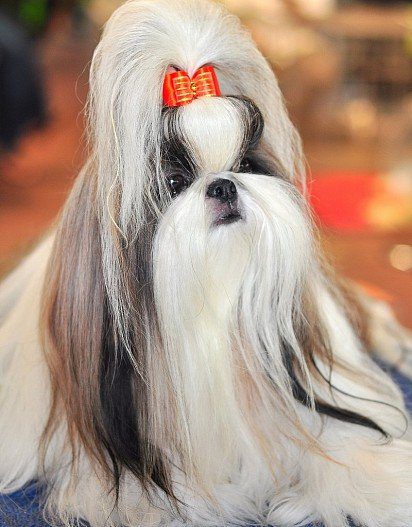
The forelegs are straight, short, with excellent musculature. Shoulders are strong and sloping back. The hind limbs are muscular, with strong bones and rounded massive thighs. Paws are strong, oval in shape, with dense, elastic pads.
Tail
Set high and carried over the back. Abundantly pubescent with long silky hair.
Wool
Double type, consisting of a long outer coat and a soft undercoat. Ideally, the guard hair should have a straight structure, but wavy varieties are also not considered a serious defect. The Shih Tzu’s head is adorned with a long thick “hair”, and “mustache” and “beard” stand out on its muzzle. Despite the decent length, the coat does not interfere with the animal’s organs of vision, so they see the Shih Tzu no worse than other dogs.
Color
The standard allows for variation in the colors of the Shih Tzu, but the following varieties remain the most common: black, white and blue, golden and white, brindle, black and white, brown, red and white and red masked, ash, cream, black and tan and blue . For individuals with a spotted “fur coat”, the presence of white marks in the forehead and at the tip of the tail is highly desirable.
rock defects
- Pink nose.
- Pointed muzzle.
- Long legs.
- Curly coat, as well as the absence of undercoat.
- Malocclusion.
- Weak stop.
- Small and close-set eyes with visible whites.
- Narrow skull.
Shih Tzu photo
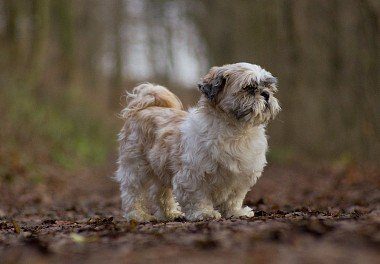
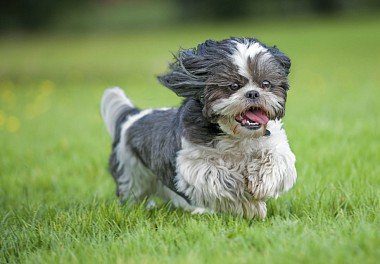

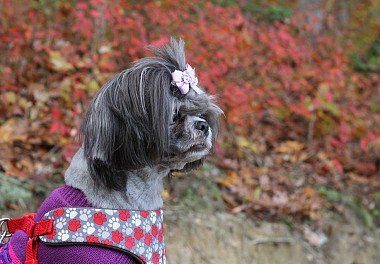

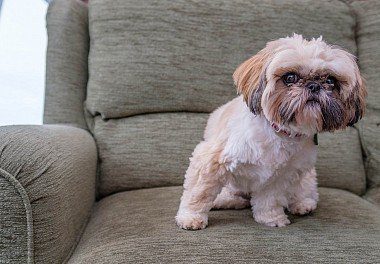
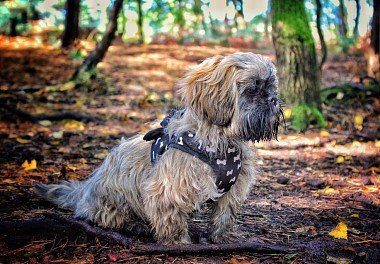
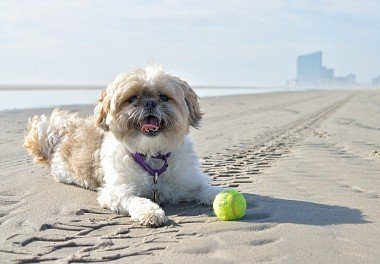
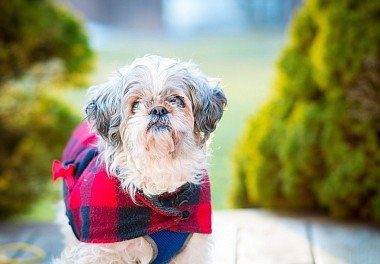
Shih Tzu character
Shih Tzu are friendly, cheerful and very contact pets. A dog living in a family does not look for an idol for itself in the person of one of its members, trying to distribute its own affection equally among all household members. As for children, these cunning Chinese “cubs” will find an approach to them. Philosophically look at children’s pranks Shih Tzu help their strong nerves. True, dogs will not tolerate violence and outright bullying from the younger generation. So if your kid has made it a rule to pull his pet’s tail, get ready for bitten fingers.
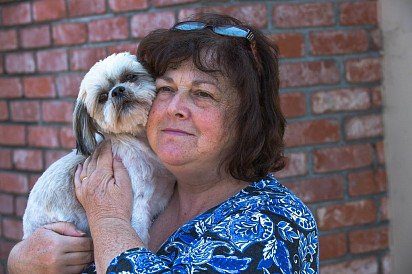
Shih Tzu puppies are small and require careful handling. Before leaving a dog in the care of a child, conduct a briefing on the rules of conduct. Warn children about the possible consequences of careless handling of an animal and explain to them how to properly handle a baby without squeezing his stomach.
Shih Tzus are often referred to as seniors’ dogs, which isn’t far from the truth. They are moderately playful, but not hyperactive and will gladly lie on a soft sofa if there is no way to go for a walk. Dogs consider the owner’s knees to be a cozy enough place for themselves. A well-fed and peaceful Shih Tzu can sit for hours on this impromptu “pedestal of honor”, thinking about something of his own.

Another amazing in all respects character trait of “chrysanthemum dogs” is gullibility. Shih Tzu easily make contact even with unfamiliar people, seeing each person as a potential friend. At first glance, such behavior touches. But it is worth recognizing that the watchman from the dog, whose vigilance is easy to lull with one kind word, is really no. So, leaving home and leaving it under the protection of a Shih Tzu, you can hardly count on the safety of your own property.
Do not think that the whole world for an animal lies in its owner. Of course, in relation to a person, fluffy babies have a strong affection, but they don’t forget about themselves either. Dogs are quite peaceful towards other pets and consider conflicts over spheres of influence to be useless. But they may well be jealous of their own owner of a Shih Tzu pet that has recently appeared in the house.
For your information: like most popular breeds bred by unscrupulous breeders for the purpose of personal enrichment, the Shih Tzu is “overgrown” with a whole range of shortcomings. So, for example, among them there may be overly cowardly, nervous and stubborn individuals with whom it is impossible to build normal relationships. The only insurance against buying such a pet will be careful monitoring of the market and the choice of a reliable breeding cattery.
Training and education
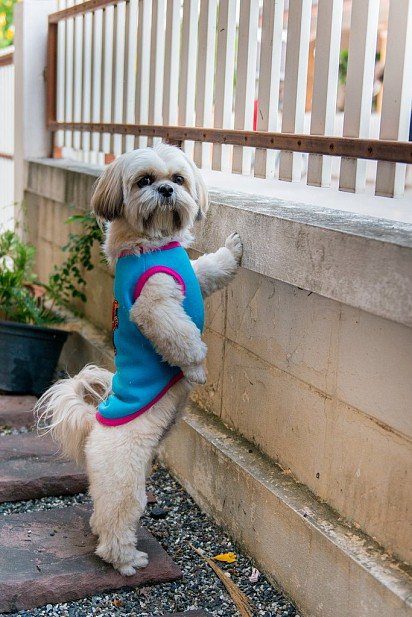
Shih Tzu can adore his own owner to the point of mania, but this will not prevent him from demonstrating his obstinate disposition during the training process. “Buddha’s pets” don’t like to learn, rather they don’t see an urgent need for it. Mastering the given material and learning a dozen commands for Shih Tzu is not a problem. The difficulty is to arouse interest in the dog’s activities.
The only possible training option for representatives of this breed is a game. Attracted by a new activity and the insinuating tone of the owner, the pet is able to perform a couple of exercises, especially if a tasty treat looms somewhere on the horizon. It is worth being prepared for the fact that the bored “lion cub” will interrupt the training at the most interesting place and go on more important matters. Trying to return the dog and keep it in this case does not make sense. Take time out and wait until the animal is in the mood for further study.
To educate a Shih Tzu, like all dogs, is necessary from the first days of appearance in the house. The puppy must recognize the authority of the owner, obey the feeding regime and know his place. Representatives of this breed experience certain difficulties with the toilet. It takes a lot of effort to teach a Shih Tzu how to use a litter box or at least a diaper. However, you should not quit what you started halfway: “chrysanthemum dogs” are far from stupid, they just need a little more time to overcome their own willfulness.
Maintenance and care
Shih Tzu do not suffer from confinement within four walls: if the owner were nearby, the food in the bowl would appear in a timely manner. As for the conditions of detention, here you have to take a little trouble. Due to the peculiarities of the structure of the skull (the same brachycephaly), these charming hairies are very sensitive to temperature conditions. Hot weather for Shih Tzu is no less destructive than cold and drafts. Accordingly, it is necessary to place the pet bed away from open doors, radiators and air conditioners.
Paddock

Shih Tzu is not averse to walking with you to the nearest supermarket or park, but only if the weather is good. In the cold and slush, the pet will sit at home with great pleasure, surrounded by his favorite toys. If for some reason the promenade had to be skipped, the dog will not be offended and will find something to do. It is allowed to take Shih Tzu puppies outside from the age of 8 months. Walks are usually started after sleeping and eating, so that the dog has the opportunity to go to the toilet outside the house. And remember: representatives of this breed are walked exclusively on a leash.
Hygiene
If you have a Shih Tzu in your house, you can be sure that you know exactly what to do in your free time. First of all, the coat of the dog, which in representatives of this breed tends to stall, requires increased attention. The Shih Tzu needs to be brushed daily. If you miss a day or two, a catastrophe, of course, will not happen, but the external gloss of your “chrysanthemum” will fade slightly. It is better to wind the clean combed hair of the future exhibitor on curlers: this way it will be less dirty and tangled. Be sure to buy hair oil and apply it to clean strands, then fold them into flagella.
Comb the Shih Tzu hair in the direction of hair growth, starting from the hind legs. The tangled areas are sorted out by hand, and the tangles are cut off. It is best to use a bristle massage brush or a metal comb. For six-month-old individuals, the hair on the head is collected in a ponytail and secured with a hairpin or elastic band. After the Shih Tzu has eaten, his “whiskers” and “beard” must be wiped with a clean cloth, as food particles often get stuck in them.
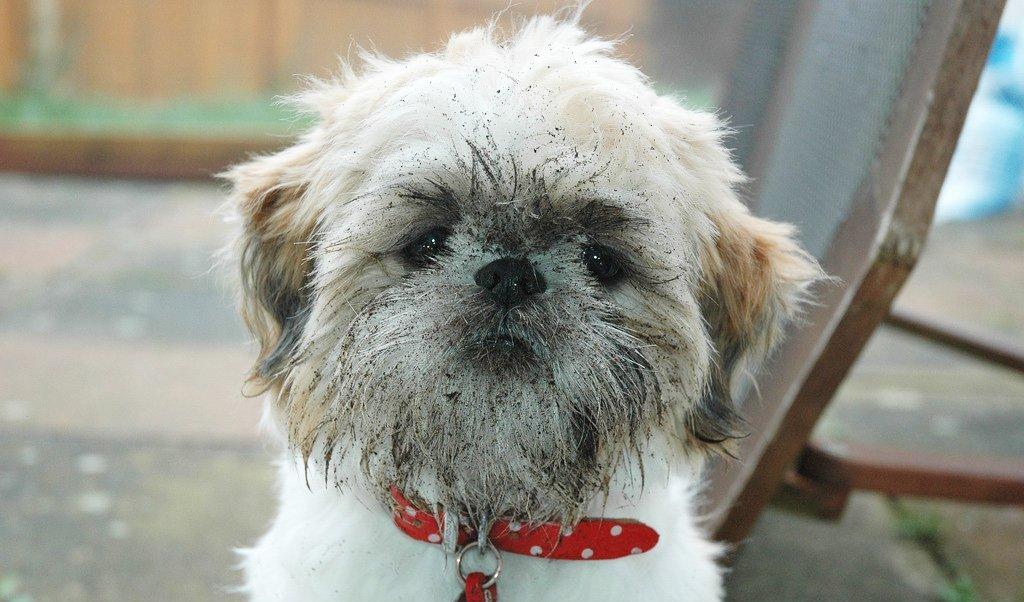
They wash the “companions of the Buddha” a couple of times a month. To do this, the shampoo is diluted with water and the resulting substance is applied to the wool. Balm to facilitate combing is also used in a diluted form. After the hair is washed, it is blotted with a towel and dried with a hair dryer.
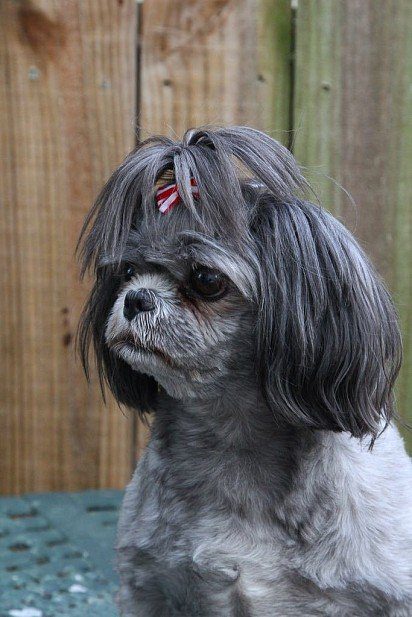
Important: before bathing, the Shih Tzu must be thoroughly combed, dismantling the tangled areas of the coat and removing the tangles. Otherwise, after washing the dog will have to be cut, as the water will only aggravate the situation, knocking the hair into “icicles”.
Every day, it is necessary to examine the eyes of the animal and take the hair framing the eyelids to the sides. In the presence of inflammation, the eyelids and eyes are washed with a solution of boric acid. The same boric acid, but already in powder, will help remove tear grooves on the coat under the lower eyelids. If a pet constantly squints its eyes or rubs them, this is a reason to be wary, and the appearance of a white dot on the pupil and clouding of the eyeball signal that it is time to take the dog to the veterinary clinic.
Shih Tzu ear care is standard: inspection + cleaning. If there is too much hair in the funnel, it can be partially removed so that the air inside circulates more freely. The paws of the animal will also require their portion of attention. Long hairs on them should be cut, and the pads themselves should be lubricated with a nourishing cream to prevent cracks. It’s great if the pet got to a pedantic owner who will brush his teeth daily and monitor their health. In cases where the owner does not have time for regular cleaning, you can try to get by with crackers, seeds or tomato juice, which are considered a good prevention of tartar.
Shih Tzu haircut
If your pet is not a championship contender or you just don’t feel like messing around with daily brushing, Shih Tzu can be trimmed to look like a puppy or a teddy bear. The hair of sheared individuals does not fall off so actively, in addition, the skin under it breathes and the animal does not suffer from overheating (especially true in summer). You will still have to comb the Shih Tzu after that, but now this procedure will take less time.
For exhibition individuals, there is a separate type of haircut – show. The wool of such animals is shortened slightly, and the hair on the head is braided into a pigtail or knot. A fairly popular type of haircut is the Shih Tzu Glamor. This option is chosen to draw attention to the animal. Glamor-style dogs are the pets of celebrities, Instagram bloggers, and other lovers of publicity. Usually such a haircut is accompanied by the use of bright accessories and stylish dog outfits, giving the Shih Tzu a resemblance to an expensive toy.
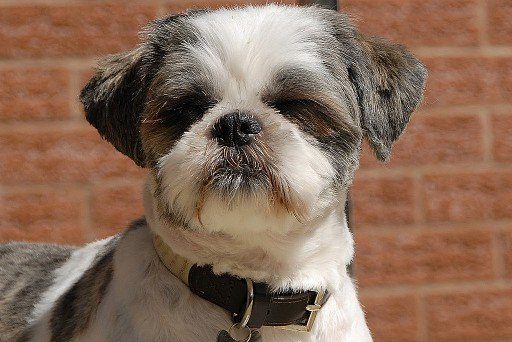
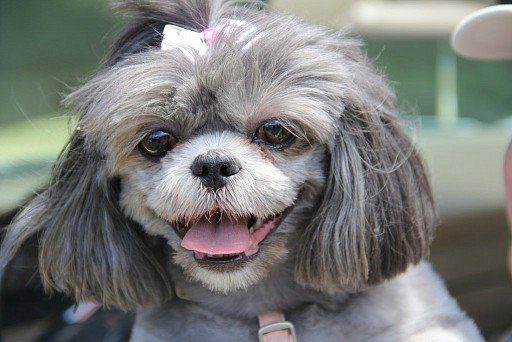
Feeding
Shih Tzu with the same pleasure absorb both natural food and “drying”, therefore, each owner decides on the type of feeding on his own. The diet of an animal that is treated with “natural” should be 20% animal protein (meat, offal). For example, it is useful for a dog to give soups on meat broth, meat and vegetable stew, and also add cold cuts to cereals. Fillet of ocean fish, dairy products, vegetables, cereals should also be present on the “table” of Shih Tzu. By the way, about fish: it can be given raw or boiled in combination with vegetables and a spoonful of vegetable oil.
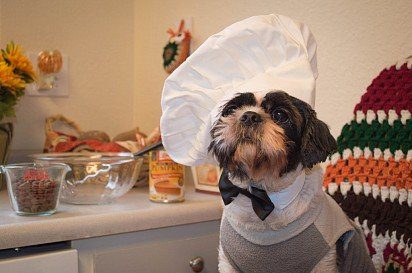
Of the supplements designed to “complete” the dog’s diet with vitamins and minerals, it is worth mentioning meat and bone meal, powdered eggshells, kelp and fish oil (preferably from salmon). Puppies under 3 months of age should receive daily milk porridge, chicken broth and fruit and vegetable salads seasoned with butter.
Prohibited Products:
- potatoes and any types of legumes;
- pearl barley;
- corn;
- River fish;
- pork;
- raw liver;
- confectionery;
- spicy, spicy and smoked dishes.
From 4 to 6 months, the Shih Tzu undergoes a change of teeth, so during this period of time it is better to exclude solid food from his diet.
Shih Tzu health and disease
Shih Tzu, despite not the most outstanding complexion, enjoy a reputation for being robust. Only heart disease, congenital subluxation of the knee joint and nephropathy can undermine the health of a dog.
Ailments that can also occur in Shih Tzu:
- urolithiasis disease;
- alopecia;
- periodontitis;
- cataract;
- ear infections;
- distichiasis;
- heart diseases.
How to choose a puppy
The main difficulty in choosing and buying a Shih Tzu puppy lies in the excessive publicity of the breed. In recent decades, all and sundry have been breeding “chrysanthemum dogs”, so the market is overflowing with mentally unbalanced animals with a defective exterior. Usually unfortunate breeders sell their wards very cheaply, which is what most buyers peck at. However, if your dream is a real purebred Shih Tzu, it is better to close the topic of cheap puppies from unknown “breeders” for yourself.
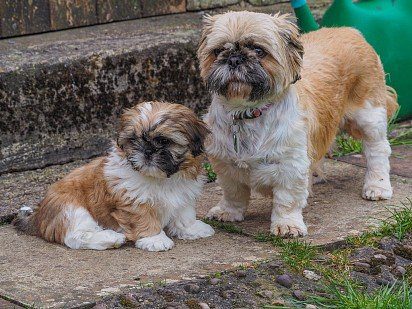
The optimal age for selling animals is 2.5 months. By this time, the breeder is obliged to give the pet the necessary vaccinations and enter information about them in the veterinary passport. It is better to buy future participants of exhibitions (show class) when they have a change of milk teeth, that is, approximately at 6 months of age. In addition, in half-year-old individuals, their exhibition potential is clearly visible – the quality of wool, anatomical features.
Reasons to not buy a Shih Tzu puppy:
- swollen belly of the baby;
- inappropriate behavior (gloom, timidity);
- the puppy draws its tail, hiding it between its legs;
- the haggard appearance of both the baby himself and his parent.
An obligatory item in the epic called “Choosing the Right Shih Tzu” is checking the living conditions of the puppies. Dirty and cramped kennels are unlikely to offer you a healthy animal. It will not be superfluous to ask the breeder how adequately his wards perceive hygiene procedures. In self-respecting nurseries, babies are taught to bathe and comb from an early age. Such animals are not afraid of water and do not throw tantrums during a visit to the groomer.
Photo of Shih Tzu puppies

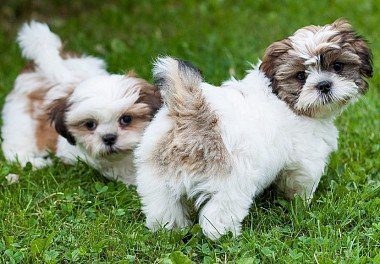
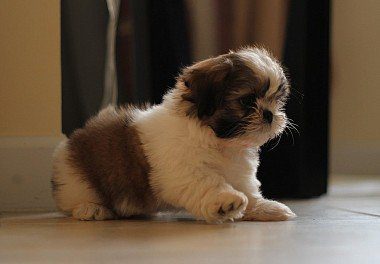

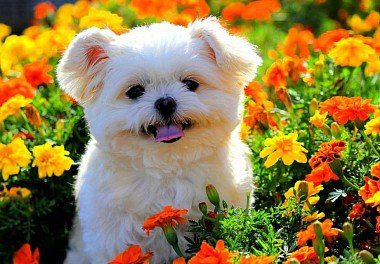

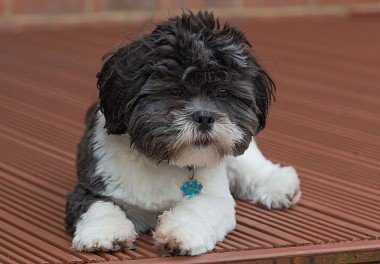

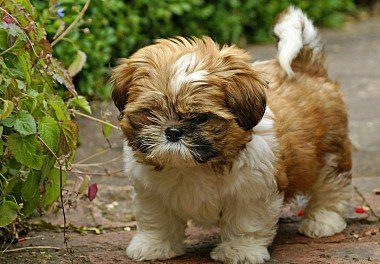
How much does a shih tzu cost
You can buy a purebred Shih Tzu puppy of the pet class with the brand and metric of the RKF for 400 – 500$. The price tag for breeding individuals starts from 900 – 1000$. The prices for the show class remain approximately the same. An exception to the general rule can be animals that are especially successful in terms of exterior, with a complete absence of external defects, the cost of which usually reaches 1500 – 2000$.




